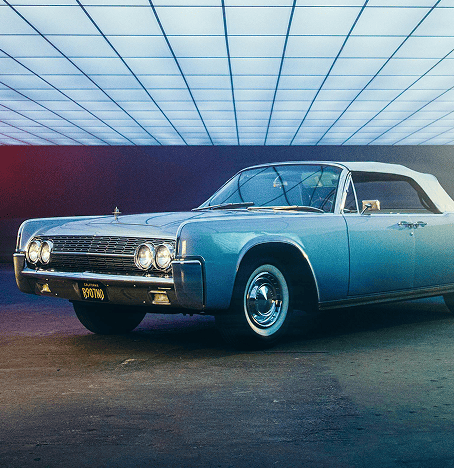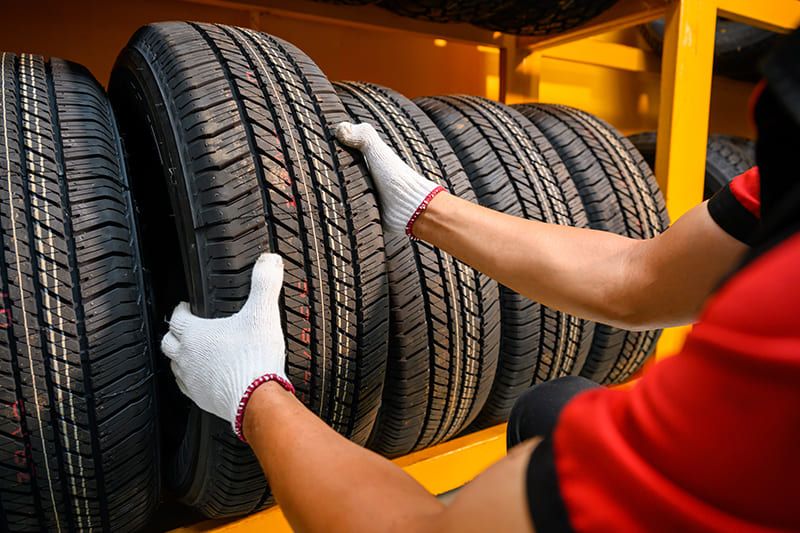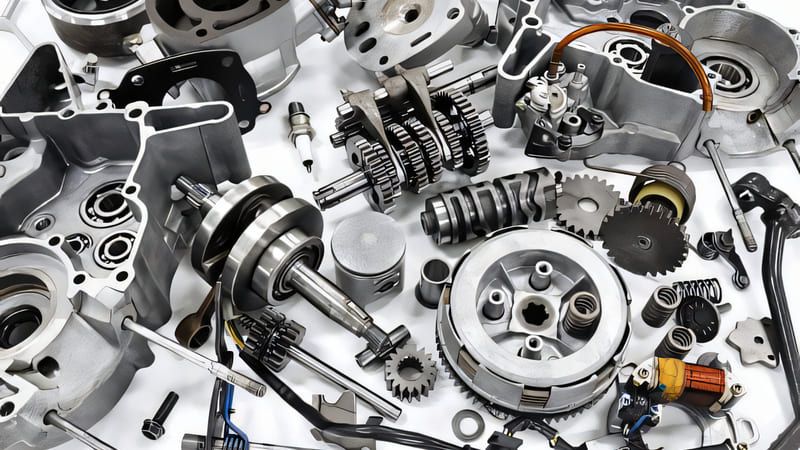Must Reads

-
 Health & Wellness
Health & WellnessHow to Relieve Bloating and Gas Naturally
Bloating and gas are gastrointestinal issues that come legitimately along with discomfort and at times even pain. Most people get it because of something they ate, but it can also be a symptom of an underlying problem. Although an occasional bloated belly is common, constant bloating may be a sign that changes in diet and lifestyle or a visit to a doctor is in order. Thankfully, there are many natural ways you can beat the bloat and keep it from returning. -
 Travel
TravelLast-Minute Vacations at the Best Prices
The concept of impromptu travel can seem very appealing in the fast paced modern world. If you are looking to get away from the day to day, to recharge your batteries or even just todiscover a new place, then a last-minute vacation might be just what you are looking for.However, with the right strategies, you can score amazing deals and ensure your spontaneous trip is one to remember while keeping costs low. Here's how to book a last-minute vacation on a budget.1.Be Open to Your DestinationBeing flexible is the most important thing when looking to get the best last minute deals. Think in terms of a spectrum of destinations rather than a single location. Use flight comparison tools like Google Flights, Skyscanner or Kayak to help you explore options based on price instead of place. These give you “explore”features that show you the cheapest flights to various places so you can pick a destination within your price range. Last-minute popular destinations include cities that always seem to have flight deals, like Las Vegas and Cancun or European capital cities like Lisbon or Budapest.2.Travel During Off-Peak TimesWhen it comes to saving money, timing is everything. Last-minute vacations on the off-seasons or mid-week, for example, can save a traveler tons of bucks. Airlines, hotels and tour operators often cut prices to fill empty seats and rooms in off-peak times. For instance, a trip to tropical locations in the rainy season or a ski destination in late spring will often come with reduced prices. Flying on Tuesday or Wednesday is also generally less expensive than flying on weekends.3.Use Last-Minute Deal WebsitesSeveral sites specialize in last-minutetravel deals. Platforms like Lastminute.com, Expedia's “Last-Minute Deals”and Priceline's“Express Deals”focus on package deals for discounted flights and hotels as well as car rentals. Subscription services such as Scott's Cheap Flights or Secret Flying also ping you when flash sales and error fares appear — a good way to snag an unbeatable deal.4.Look into Different Types of AccommodationsHotels get all the publicity,but alternatives like Airbnbor Vrbocan save you big, particularly on last-minute bookings. Most hosts reduce their prices to fill up any space, and you might stumble upon unique places to stay for a fraction of the price. And there are house-sitting platforms such as TrustedHousesitters where you can stay in someone's home for no cost in exchange for looking after their pets or property.5.Pack Light and Be Ready to GoAnother great thing about last-minute travel is that it forces you to pack quickly and efficiently. Heading out with nothing but a carry-on helps you avoid luggage fees and makes it easier to take advantage of last-minute flight deals. Have travel documents, toiletries, and a flexible wardrobe packed and ready to go so you can book and leave in hours.6.Use Points and MilesIf you've been hoarding credit card points or airline miles, a spur-of-the-moment vacation is a great opportunity to cash them in. Most loyalty programs allow for last-minute redemptions, and you may have more options for award seats or hotel rooms available during off-peak times. Look at your accounts to see if you can pay for part, or all, of your trip with points.7.Book Activities in AdvanceAlthough the fun of spontaneity is a tube ride or bus tour away, scheduling important activities or tours in advance can save you money and prevent you from missing must-see destinations. Search for discounted tickets on sites like Viator or GetYourGuide, or look up city passes, which package multiple attractions at a discount.So in summary, a last minute trip doesn't have to cost the earth or be overly stressful. With some flexibility, research and creativity, you can score amazing deals and create memorableexperiences. So why wait? Today, start planning your spontaneous getaway and jump at the best deals you can get. -
 Travel
TravelThe Great Accommodation Debate: Hotels vs. Homestays
To stay at a hotel or to homestay, this age-old question is something that travelers have been debating over for decades. Not to mention that each has a unique experience, serving a variety of appetites, budgets and styles of travel. There's no right answer, rather it's what each person wants to get out of their travels. -
 Automotive
AutomotiveHow the Cadillac LYRIQ Stands Out in the Luxury Electric SUV Market
The automotive world’s embrace of electrified powertrains has triggered a rush of high-end electric SUVs, as manufacturers begin to accelerate the battle for dominance in the segment. The Cadillac LYRIQ stands out among these rivals, combining General Motors’ decades of engineering experience with the tech-forward innovation of a startup. As a Cadillac-exclusive, all-electric vehicle, the LYRIQ not only realizes a world that meets your expectations, but challenges expectations altogether. Here’s why this luxury electric SUV sets itself apart from rivals like the Tesla Model X, BMW iX and Mercedes-Benz EQS SUV
Trending Articles


Why Enterprise Rent-A-Car Stands Out as the Top Choice for Car Rentals
In this hustle and bustle world, there's no time to jester about in search of a reliable and comfortable way to attend your business conference across the state come Mondayor make the family camping trip Friday night. With dozens of car rental firms competing for your business, it can be difficult to work out which one is offering the best deal. But in a world crowded with those choices, one company, Enterprise Rent-A-Car stands at or near the top of what companies would love to be for quality and customer service.And whether it’s through our legendary service and extensive inventory or the pursuit of new ideas, we never stop trying to meet these high standards in every way possible.

Why Should We Choose Hertz Car Rentals?
In thisage of rapid globalization, nothing beatsconvenience,dependability and high-quality services in the transport sector. Whether you need to rent aset of wheels for business travel, family vacations or just a temporary replacement of your vehicle, partnering with the right car rental provider can make a world of difference. With all the options these days, Hertz Car Rental is one ofthe top choices formany customers around the world. Here aresome reasons why Hertz is a great option for your rental requirements.1.Global Reach and AvailabilityHertz is undoubtedly theoldest and most recognized name in the car rentals industry andhas operated in a whopping 150 countries and thousands of places. Hertz is likely to have a rental location by you if you’re flying into a big international airport or need a vehicle in a smaller city. And although it doesn’t happen as often, this extensive network means you can easily secure a Hertz rental wherever your travels take you, making ita reliable option for domestic and international trips alike.2.Wide Range of Vehicle OptionsHertzprovides a great spread of options to suit every need and desire. Solo traveler who wants to roam in a compact car, a family who needs space with an SUV, ora guy just looking to roll in a luxury car for a big date,Hertz has you covered. Also, for the environmentally minded customer Hertz offers the hybrid and electric option. This variety ensures that there's alwaysthe perfect car for you, whether you want fuel economy, comfort or style.3.Exceptional Customer ServiceHertz's reputation was built oncustomer service. Whether youneed as much help as deciding the right vehicle for you or questions about rental policies. Its team is trained for everything. Hertz's 24/7 customer support means you'll have someone to turn to when you need it most, whether it's the middle of the day or the middle of the night. And Hertz's strong focus on customer satisfaction differentiates it from a host of competitors.4.Technological SupportsHertz has harnessed new technologies to enhance therental experience. It also allows customer to easily book, modify orcancel anybookings on its customer friendly website or mobile application. Hertz also features its Gold Plus Rewards program that offers benefits,such as expedited check-in and check-out, customized offers and points for free rentals.Hertz is extending contactless rental with curbside pickup and digital contracts, in response to current health consciousness at the moment, especially widespread high hygiene awareness and COVID-19 pandemic.5.NoHidden Fees and Easy to Change PolicyHertz transparentpricing structure rental plans range from daily or weekly plans to long-term plans, so customers can select the option that fits theirbudget and schedule. Hertz has flexible cancellation policies,so you can change plans without steep penalties. This transparencyand flexibility establish Hertz as a reliable option for travelers.6.Firm Indicators of SafetyandCleanlinessHertzis following strict hygiene protocols to keep its customers safe.The vehicles are deep cleaned and disinfectedbetween rentals, paying particular attention to high touch-point surfaces.In an effort to reduceface time, Hertz has contactless rentals offering peace of mind for travelers.7.Corporate and Long-TermRental SolutionsHertz caters not only to leisure travelers but also to businesses and people who need long-term rentals. Through their corporate programs, they provide customized solutions for companies, such as discounted rates, line-itemized billing, and fleet management solutions. Hertz also offers long-term rental options for those who need a vehicle for an extended period; these rentals are more flexible and cost-effective than leasing or ownership.With its global reach, various car types and technological supports, Hertz is at the top of car rental industry and brings exceptional rental experience. Hertz gives you the reliability, convenience, and peace of mind that you require for a stress-free trip, whether you are traveling for work or play.So, next time you rent a car, rent withHertz and see for yourself.

Finding the Perfect Fit: A Guide to Choosing the Best Tires for Your SUV
As we all know, SUV is so potent and versatile, it is perfect for you whether you want to drive to school, on the freeway, or weekend adventures. But one important thing is that you should choose the right tires. In this guide, we will help you navigate the major categories and top nominees so that when it’s time to cast an informed pick.Highway/Touring Tires: The Refined CommuterThese are the most popular tire replaces by OEM (Original Equipment Manufacturers). They are engineered for excellent on-road performance and a quiet, comfortable ride. The tread designs are not as aggressive, decreasing road hum and the rubber compounds are frequently engineered for all-season grip and durability.1.Best Choice: Micheline Defender LTX M/SOne of your top picks, the Defender LTX M/S is the gold standard for highway tires. It offers outstanding treadlife, a very quiet ride (73db) as well rough road stability and traction in both wet and dry conditions. Even when it is rainy and the road is covered by a little snow, the tire is not afraid at all. But you need to spend on it, because it is a little expensive. But it deserves because of the quality and performance.2.Excellent Alternative: Continental CrossContact LX25CrossContact LX25 is your match for comfort and noise when compared to the Michelin. It has an advanced tread design that promotes excellent wet braking and resistance to hydroplaning. For drivers in rainier parts of the country, that’s a great option.All-Terrain (A/T) Tires: The Adventure Ready Types of TreadAnd AT tires are the perfect compromise for the active family. Ridged soles, on the other hand, they have a more aggressively designed tread pattern which features blocky patterns even acres and edging for grip when walking through dirt, gravel and rocks. They will also often have reinforced sidewalls for better puncture protection. Compared to the highway tires, this kind of tires may arouse more noise which means they are not that comfortable.1.Top Pick: Falken Wildpeak A/T3WThe Falken Wildpeak has received a lot of praises from the customers because of its superb performance and excellent road safety. It is designed as truck-pillar tread, so it can stick to the snow or mud land well. What is more, it is durable and can be used for a long time, and the price is also friendly.2.Excellent Alternative: BFGoodrich All-Terrain T/A KO2The KO2 is an icon. It is the gold standard of durability and off-road prowess. Its sidewalls are very solid, and so is grip in various off-road places. It’s substantially louder and less civilized on the road than the Falken, but for pure off-roaders it’s a top choice.Performance/High-Performance Tires: The Sporty HandlerThey have a stiffer sidewall and are made from a stickier rubber compound which allows them to be more responsive. The chevron-shaped tread pattern is designed to allow water to evacuate quickly to help prevent hydroplaning on wet roads at high speeds. But they don’t behave well on off-roading and winter road, what’s worse, they are not suitable for long-turn using.1.Top Pick: Michelin Pilot Sport All Season 4The Pilot Sport AS4 is amazing for drivers seeking the sports car handling on their SUV. The tire shows great capability on griping both the dry and wet road. As a high quality tire, it even behaves better on snow road.2.Excellent Alternative: Pirelli Scorpion Verde All Season Plus IIA fine choice for all those sporty crossovers that still want a dash of softness and efficiency. Although the Pirelli provides sharp handling and good wet grip it maintains lower rolling resistance for better fuel economy and a smoother ride than even more extreme performance tires.The “best”tire is for you to add that into your own personal equation against cost, performance expectation and driving environment. By knowing the categories and top performers, you can choose a tire that will bring out your SUV's maximum potential, both safely and efficiently.

Your Ultimate Guide to Renting the Perfect Florida Vacation Home
Dreaming of a Florida getaway? The typical hotel room can often be trade out a for fantastic private vacation home. Allow me to stretch your travel budget even more as many private homes offer you endless opportunities that the traditional hotel just cannot, like several bedrooms for friends and family, big living spaces full kitchens outdoor space, in many cases you get swimming pools. They include beachy condos on the Gulf Coast, roomy villas with private pools near Orlando’s theme parks and elsewhere.But if you want to find an ideal residency in Florida, you need some hints. Here are the factors you need to pay attention to when you choose ideal renting in Florida
Why Do I Fart So Much? Understanding Excessive Flatulence
02.Benidorm All-Inclusive Holidays Paradise-like Beach Experiences
03.Things to Pay Attention to When Buying a Used Pickup Truck
04.Conquering the Fungus: A Guide to Effective Toenail Treatment
05.Versatile Magic of Adding a Coffee Table to Your Space
06.An Unforgettable Jamaican Adventure: Must-Visit Attractions
07.Guide to Buying a Suitable Mattresses for You
08.What Causes A Woman’s Bladder Prolapse?
Popular Articles
-
 Health & Wellness
Health & WellnessWhat Causes A Woman’s Bladder Prolapse?
The supportive tissue between a woman's bladder and vaginal wall weakens and stretches, allowing the bladder to bulge into the vagina in a condition is known as cystoceleor bladder prolapse. It can range from mild to severe and may result in pain, urinary dysfunction, and visible mass.There are a number of reasons why the pelvic floor muscles and connective tissues become damaged and weak, ultimately leading to bladder prolapse. Identifying these causes can be a way to prevent and intervene early on. -
 Finance
FinanceAdvantages of Fixed Income Funds
Fixed income funds have long been an integral part of investment portfolios, particularly due to the diverse range of benefits they provide to both conservative and strategic investors. These funds usually invest in debt securities, including government and corporate bonds and other fixed-income securities, and offer a regular stream of income from their interest payments. Here, we delve more into the benefits of fixed income funds and why they continue to be a favorite among investments seeking stability, diversification, and predictable returns.1.Steady and Predictable IncomeFixed income funds have one of the major advantages that can both generate a consistent and predictable income. Unlike volatile and uncertain investing in equities with progressive returns,fixed income funds pay regular interest. This makes them especially appealing for retirees or investors who need a steady income stream to meet their financial commitments. Returns being predicted make it easier for investors to plan their finances more confidently.2.Less Risky Than Equity FundsUnlike stocks, where the return in volatile, bonds and other debt instruments aretypically less volatile because the return is not directly correlated to the performance to the issuing company. The repayment of bondholders takes priority over dividends to shareholders, even if a company is performing poorly. Government bonds in particular are regarded as a safe haven because of the low chance of default. Such lower risk profile makes fixed income funds a perfect fit for risk-averse investors.3.Portfolio DiversificationFixed income funds are fundamental in diversifying portfolios, one of the principles of prudent investing. Adding fixed income funds toa portfolio can help lower overall risk and volatility. Bonds also tend to have a low or negative correlation with equities so they tend to do well when stock markets underperform. This inverse correlation tends to act as portfolio hedge, offering stability when the market experiences decline, and aiding in long-term prudence.4.Capital PreservationFixed income funds are perfect for the capital preserver investor. If they don't have the earnings potential of equities, they are less likely to lose a lot of money. This is critical for retirees or anyone with financial goals in the near term, as this strategy protects their principal investment from being substantially depleted. Government (particularly U.S. Federal) and other high-qualitycorporate bonds, for example, have traditionally offered a safe haven for capital while still yielding modest returns.5.LiquidityThe liquidity profile in fixed income funds is much higher than single bonds. Although individual bonds can be hard to sell before their maturity date, fixed income funds enable investors to buy and sell shares on any business day. This liquidity offers flexibility, allowing investors to withdraw their funds at a pinch, without facing heavy early withdrawal charges or losses. This facility alsomakes it easier to re-balance portfolios based on changing market scenarios or personal financial requirements.6.Professional ManagementFixed income funds offer professional management, a factor that can be vital in the bond marketlabyrinth. The same goes for flexible debt fund, the fund manager is someone who will analyze credit risk, interest rate cycle and economic conditions, to get the fund's portfolio where it lays out tobe. This professional focus might help avoid bad betsand potentially lead to stronger returns than the same capital would generate if invested in one bond at a time, potentially threatening an individual bond investment.Despite this, fixed income funds provide an attractive balance of consistent income, lower risk, diversification,and capital preservation, making them a necessary part of a diversified investment portfolio. With their stability, professional management and liquidity, they can suit almost any type of investor — stability seekers as well as risk diversification for those with riskier holdings. Not offering as lofty returns as equities, their contributions to dampening portfolio volatility and ensuring financial peace of mind is obvious. However, for conservative investors looking for an asset class that has stood the test of time, fixed income funds have been a tried and true investment vehicle. -
 Automotive
AutomotivePractical Benefits of a Truck Bed Cover
When you load the truck, the problem that truck owners encounter is how to utilizetheir truck bed to its full extent while keeping the bed free so they can have convenience with it. The single, best accessory for creating such a balance is truck bed covers. Nestled in the shadow of some of the most beautiful landscape in the U.S. lays a product that is often underestimated, the bedcover. While this is a product that is frequently taken for granted, it provides several purposes beyond good looks including security, fuel economy and protection from the elements, not to mention giving a work truck functionality in terms of storage. -
 Travel
TravelComprehensive Plans for Your Dream Vacation to Disneyland California
Disneyland California is a name that brings to mind Sleeping Beauty Castle, thrill rides, beloved characters and, well, magic. But making this dream a reality is more than just pixie dust — it requires a lot more. Create a magical Disney vacation by combining your trip planning with categories such as timing tickets where to stay what to see and do the people you’ll meet special attractions daily plan, meals budget. -
 Finance
FinanceCredit Unions Offering the Best 5-Year CD Rates
Certificates of Deposit (CDs) are a popular choice for those saving money. Out of all the different CD terms available, 5-year CDs tend to have some of the highest interest rates, so they are often a good option for investors who are willing to tie up their cash for a longer duration. Banks tend to be the default choice for CDs, but credit unions have come to be a strong alternative, frequently offering competitive rates and member-centric perks. This article explores credit unions that are offering some of the best 5-year CD rates and whether they are the right option for your savings needs.1.Navy Federal Credit UnionNavy Federal Credit Union (NFCU), in fact, is one of the largest credit unions in the USserving military members, veterans and their families. NFCU is a competitive player on CDs as evidenced on its 5-year CD. Currently, the 5-year CDrates with them are frequently among the highest available on the market. Besides competitiverates, NFCU offers flexible terms and the option of a specialty certificate that gives it a one-time rate bump during the term. Membership is limited to military or Department of Defense affiliates, but for thosewho meet that criterion, NFCU is among the very best.2.Alliant Credit UnionAlliant Credit Union is a name that you can trust on this list with their competitive rates and also high-yield CDs. Ally's 5-yearCD is especially attractive for anyone who wants to make the most of their savings. Alliant also has low fees and an easy-to-use online banking platform, making it a great option for tech-savvy consumers. Anyone who joins Foster Care to Success, a nonprofit organization, can become a member for a small donation.3.PenFed Credit UnionAnother one of the best 5-year CDs comes from PenFed Credit Union — short for Pentagon Federal Credit Union. Originally catering to military personnel, PenFed has opened its membership to anyone who joins a qualifying organization or donates a small amount to a partner nonprofit. Consistently competitive with PenFed 5-year CD Rates, they offer a variety of CD Terms for your investment goals. They provide easy access to online tools and resources to help you manage your account and track your savings progress.4.Delta Community Credit UnionGeorgia-based Delta Community Credit Union is one of the Southeast's marqueecredit unions, and it offers some of the best CD rates you can find in the region. One of their most attractive products is the 5-year CD, which frequently offersrates that beat many of the national banks. Membership is available for residents and people who work, worship or go to school within eligible Georgia counties, as well as select employer groups and associations. Delta Community also offers customer service excellence and diverse financial products to meet needs across the spectrum.5.SchoolsFirst Federal Credit UnionSchoolsFirst FCU is one of the largest credit unions for school employees in California and offers some of the best CD rates. Contributing to its popularity is their 5-year CD for members looking for a long-term saving solution. SchoolsFirst also has a broad range of CD terms and an option to ladder CDs, which enables members to stagger when the investments mature for greaterflexibility. Membership is limited to the education field, but it's a great option for those who qualify.In conclusion, individuals looking for the best 5-year CD rates would do well to check out credit unions. Credit unions such as Navy Federal, Alliant, PenFed, Delta Community and SchoolsFirst drive the top tierof competitors with their member-oriented focus, competitive rates, and community-driven values. However, by analyzing your financial targets and comparing the services offered by different credit unions, you can discover a 5-year CD that enables you to grow your savings alongside anestablishment that prioritizes the needs of its customers. If you're saving for something big, an emergency fund, or a retirement fund, then a 5-year CD offered by a credit union may be just the tool you need to reach those goals. -
 Automotive
AutomotiveCadillac XT5: Redefining Modern American Luxury in the SUV Segment
In the part of luxury midsize SUVs, XT5 rates as the kind of sensible American automotive excellence that blends good-looking design and a friendly cabin with a reasonable price tag. Ever since it replaced the SRX, the XT5 has been one of Cadillac's best-selling models, attracting sophisticated owners who want a vehicle that offers them a balance between full comfort, performance, ans state-of-the-art technology. So what makes this top grade SUV special in a crowded market dominated by European rivals?





 Visit Website
Visit Website



























